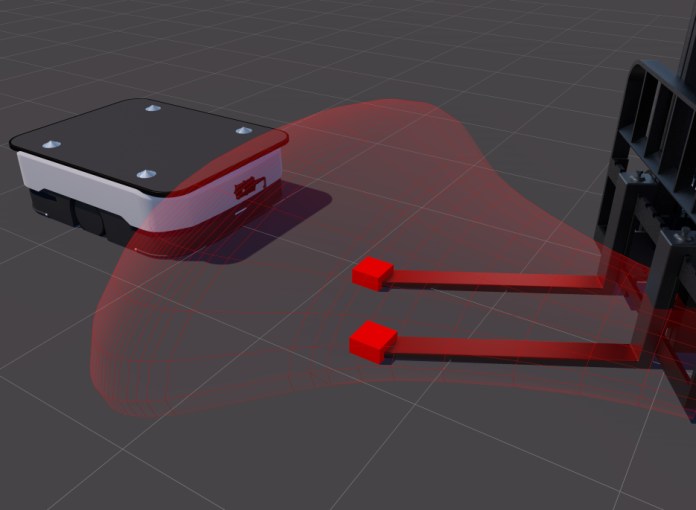Toposens GmbH has introduced its ultrasonic echolocation sensor for 3D collision avoidance. The sensor is available in an industrial-grade sensor development kit, called ECHO ONE DK, which is based on the company’s 3D ultrasonic technology that uses time-of-flight echolocation data for 3D detection. Reported to mimic a bat’s echolocation techniques, the new sensor enables automated guided vehicles (AGVs) and other robotic systems to avoid collisions with all kinds of obstacles.
Unlike existing sensor technologies that can be negatively impacted by lighting conditions or moisture (such as fog), said the company, the ECHO ONE DK uses echolocation to generate real-time 3D echolocation data that can guide autonomous systems across a variety of applications. The 3D ultrasonic sensor, with IP67 protection rating, can operate in harsh environments.
“There is currently no sufficient solution to the challenges of reliable environment perception in range-finding sensors, especially in 3D ultra-short-range protecting robots from collisions with objects in 3D space,” said the company. “In logistics, AGVs are considered safer and more reliable than traditional transportation methods. Nevertheless, they are still prone to navigation management issues such as deadlocks and collisions (e.g., not detecting forklift forks accurately), which can lead to high repair costs and damaged AGVs, broken cargo, production stoppages and in the worst case, personal injuries.”

The 3D ultrasonic echolocation sensor enables AGVs and other robotic systems to avoid collisions with all kinds of obstacles. Click for a larger image. (Source: Toposens)
The ECHO ONE DK features 3D multi-object detection of complex and transparent objects in an ultra-short operating range from 20 cm up to 3 m and offers an ultra-wide field-of-view of up to 180° in an ultra-short range and up to 110° at 3 m. The sensor offers low power consumption of 2.2 W, supporting a longer robot uptime.
The development kit comes with a CAN and USB interface and the following software packages: Toposens Sensor Library (C++-Library), ROS Implementation Package, Cross-Platform Toposens 3D Visualizer. The sensor is certified according to CE, FCC, and IP67 regulation.
Advertisement






